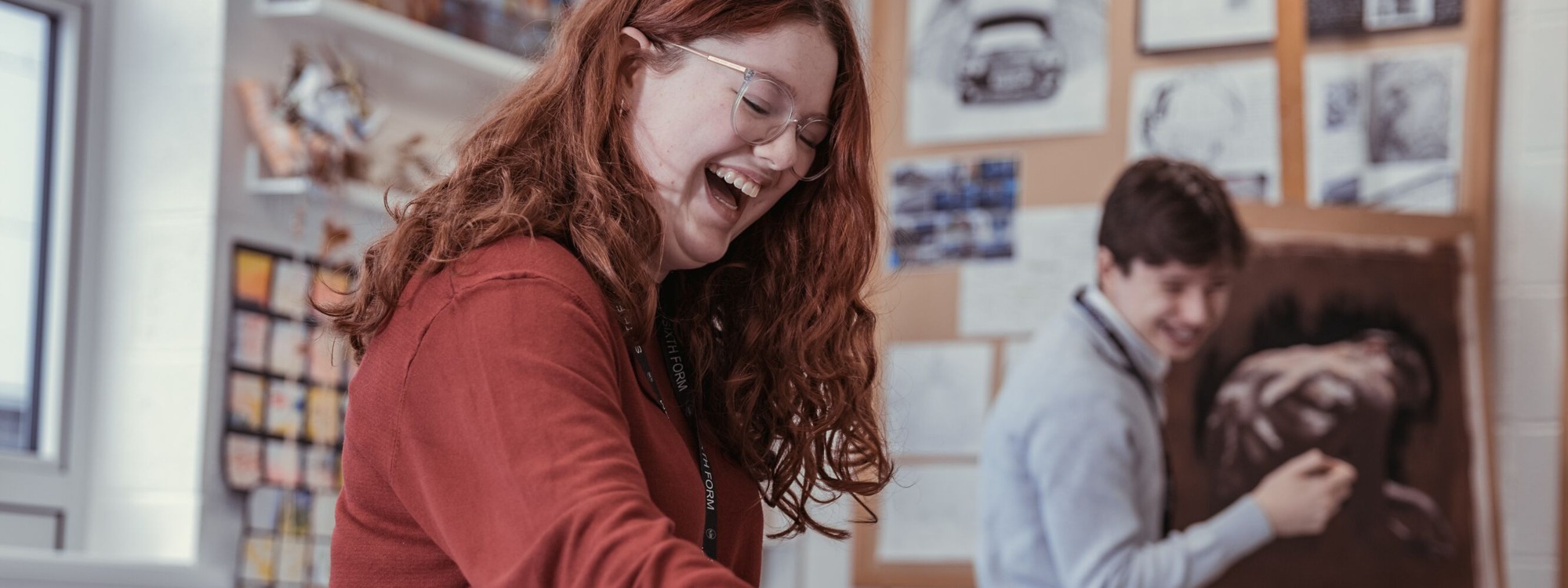- Home
- Our Curriculum
- Subjects
- Fine Art - KS5
Fine Art - KS5
Students at SJB who study Art and Design embark on a journey of self-expression. Along the way there will be a variety of practical opportunities across a range of skill sets. Students explore, enjoy, unlock their creative potential and enhance their wellbeing. Art and Design prepares students for the creative industries and equips them with transferable skills for other pathways.
Exam Board: Eduqas
Qualification: A Level Art and Design: Fine Art
What Will You Study?
A Level Fine Art encourages creative exploration through a wide range of artistic practices. You’ll develop your own ideas and outcomes using traditional and contemporary techniques, supported by critical and contextual understanding.
The course is divided into two major components:
Component 1: Personal Investigation (60% of qualification)
Consists of two parts:
- Practical project based on themes and subject matter of personal significance.
- An extended written element of 1000 words minimum, which may contain images and texts and must clearly relate to practical work using an appropriate working vocabulary and specialist terminology.
Component 2: Externally Set Assignment (40% of qualification)
Externally Set Assignment Structure: Preparatory period commencing on or from 1 February (of Year 13). Students select one starting point from a series of visual or written stimuli to inspire and inform their own work. The preparatory period concludes with 15 hours of supervised time where students produce a final outcome/s.
- Confidence in expressing ideas visually and conceptually
- Skills in a wide range of media, techniques and processes
- Ability to research, analyse and reflect critically on art
- A personal and creative portfolio for future study or careers
- Preparation for higher education or creative industries
Studying Fine Art not only prepares you for further education and creative careers, but also equips you with transferable skills that are highly valued across many industries.
You’ll develop:
- Creative thinking – useful in marketing, product design, and innovation roles
- Problem-solving – applicable in business, engineering, and project management
- Visual communication – essential in advertising, publishing, and digital media
- Independent research and analysis – valuable in academic, legal, and consultancy fields
- Time management and self-direction – key for freelance work and leadership roles
Typical career paths include:
- Fine Artist, Illustrator, Graphic Designer, Photographer
- Art Therapist, Teacher, Curator, Arts Administrator
- Roles in fashion, film, animation, advertising, and media
This subject builds a strong foundation for both specialist and broad career options.
· Grade 6 or higher in GCSE Art and design
· Grade 6 or higher in other creative GCSE subjects will be considered
· External candidates to also bring along a portfolio of work
The A Level is teacher assessed through two coursework components.
Component 1: Personal Investigation
Portfolio of practical work and outcomes, supported by an extended written element (minimum 1000 words)
60% of A Level
Component 2: Externally Set Assignment
Preparatory studies and outcome(s) based on a set theme released in February, including a 15-hour supervised period to produce the final piece(s)
40% of A Level
Assessment is based based upon four objectives Develop, Explore, Record and Present. All work is then externally moderated.
